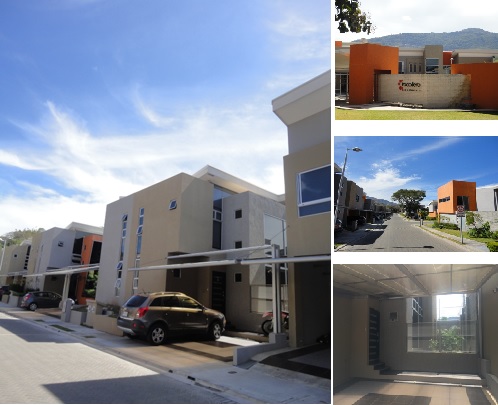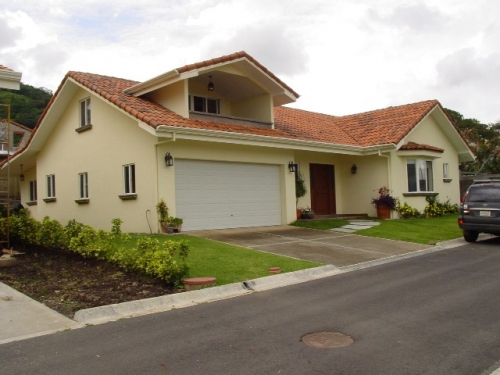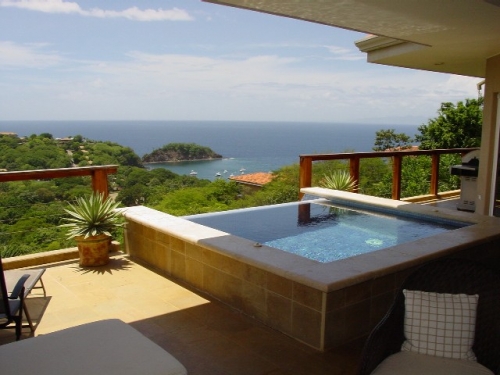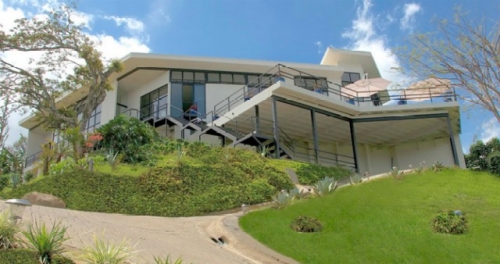Costa Rica Guide
Costa Rica Real Estate
List your property today!
Inclusion of real estate listings at Costa Rica Guide is
absolutely free of charge.
Featured Properties
Costa Rica Guide - Costa Rica Real Estate
Types of Property - Real Estate Information
Just like in the United States, Canada, and Europe, there are different types of properties available to buyers. Understanding the various types of properties is crucial in the evaluation process. This section highlights the property types that can be purchased in Costa Rica.
A. Fee Simple:
i. The most comprehensive form of property ownership in Costa Rica is fee simple. The conditions for this type of ownership are the same for foreigners as for Costa Rica citizens. The concept of fee simple ownership in Costa Rica is the same as in the US.
Basically, fee simple ownership gives the owner of the property the absolute right to physically own the property, use it, enjoy it (i.e. usufruct), sell it, lease it, improve it, etc., subject only to conditions outlined in the Costa Rica laws.
B. Concessions in the Maritime Zone:
Concession property is more commonly known as beachfront property.
In Costa Rica, 95% of beachfront property is considered concession property and is governed by the Maritime Zone Law and other specific regulations including but not limited to special dispositions stated by municipalities and the ICT (Costa Rica Institute of Tourism). These legal dispositions set forth the conditions under which foreigners and local residents can own concession property.
A concession in Costa Rica is defined as the right to use and enjoy a specific property located on the maritime zone for a pre-determined period of time. The government through the respective municipality grants this right.
The first 200 meters measured horizontally from the high tide line defines the boundary of the maritime zone. This zone also includes islands, pinnacles of rock, mangroves, estuaries, small islands and any small natural formation that overcome the level of the ocean. This 200 meter zone is divided into two areas:
1. Public Area: The first 50 meters measured horizontally from the high tide line. This zone is not available for ownership of any kind. No kind of development is allowed except for constructions approved by government entities.
2. Restricted/Concession Area: The area comprised of the following 150 meters is available for concessions to be granted. A concession is in essence a "lease" on the property granted to the lessee for a specific period of time. Normally the concession period is granted for 20 years. An owner of a concession may build on that concession, subdivide the concession and make other changes to the property with the appropriate permits from the local municipality.
There are some limitations regarding properties located within the maritime zone. The law establishes that foreigners cannot be concessionaires except through a partnership with a Costa Rican or foreigners residing in Costa Rica for at lease five years.
C. Properties in Condominium:
When US citizens think of condominiums, they normally think of large apartments or townhouses.
In Costa Rica, there is a specific law that in combination with other legal dispositions regulates all conditions required in order to set up a condominium. Each condominium development has its own bylaw containing all the restrictions, limitations and privileges that can be enjoyed by the owners.
Ownership of property "in condominium" is fee simple ownership.
It is important to obtain a copy of the bylaws to check the architectural guidelines, land usage restrictions, and others. Developers commonly use the condominium laws to build private roads and to set architectural guidelines to prevent abuse.
For the most part, condominium laws in Costa Rica are designed to protect the integrity of a development.
D. Time Share:
The right to use a property during certain weeks of the year. In most cases the time-share ownership grants similar rights as implied in the condominium regulation except that in the time-share it is limited to certain weeks during the year. Consequently, one single unit is subdivided into parts and sold individually.






